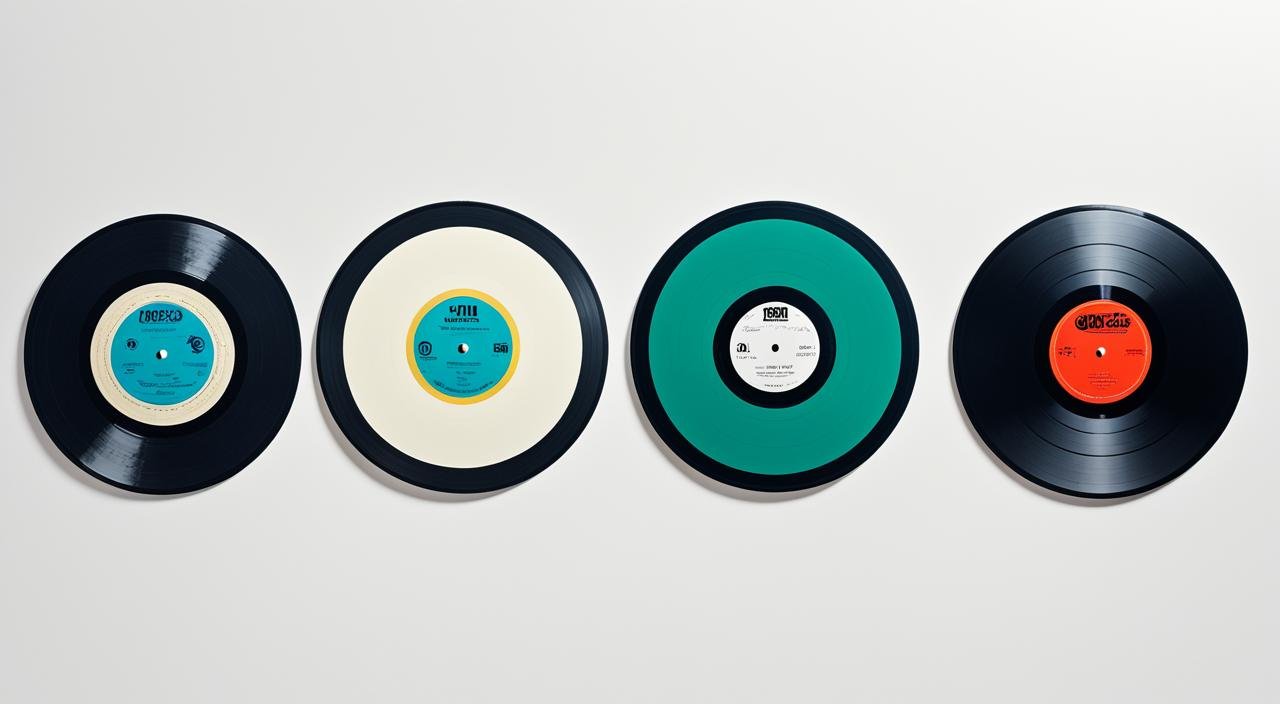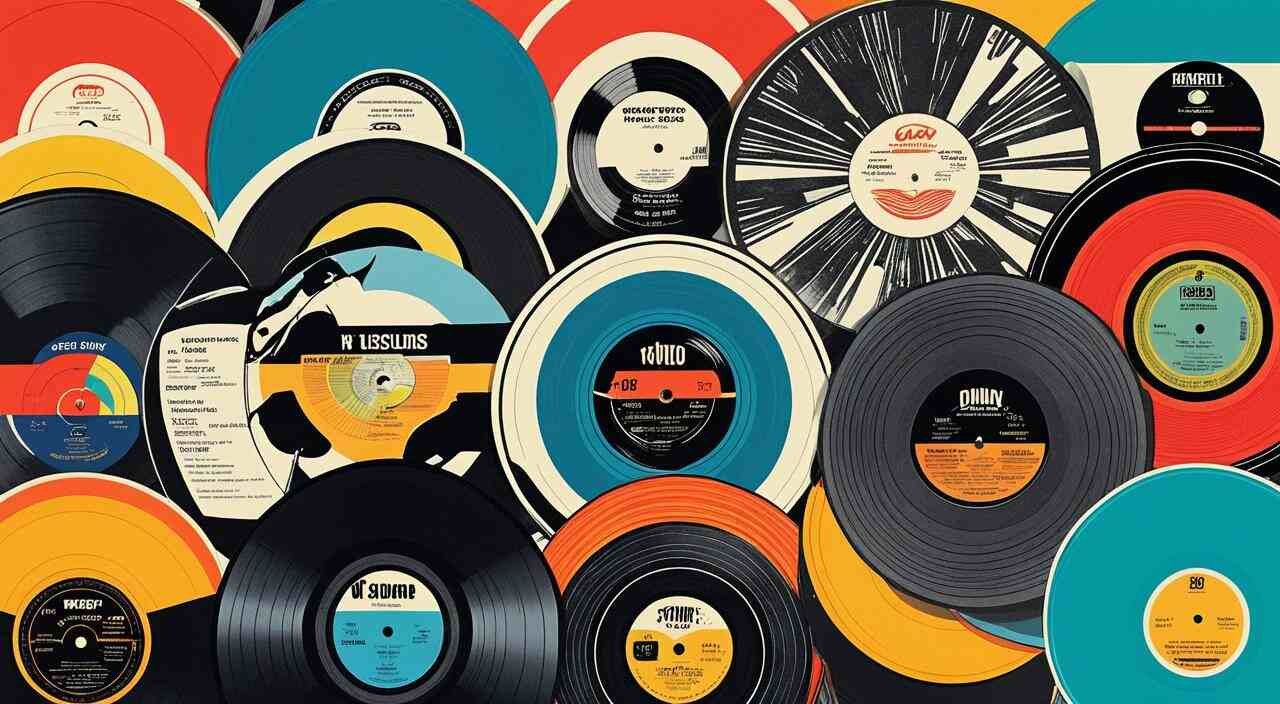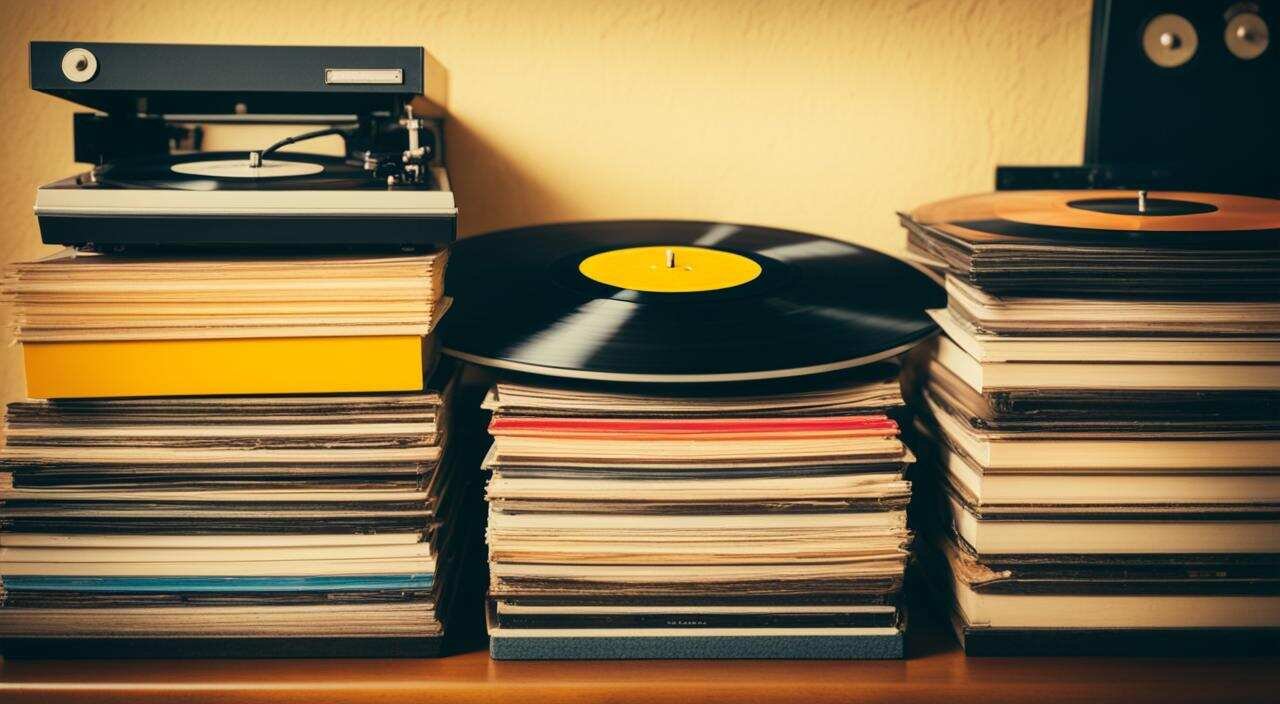Vinyl records have been a beloved medium for music enthusiasts for decades. From the timeless classics to the latest releases, vinyl records offer a unique listening experience that connects us to the music in a tangible way. One aspect that often intrigues collectors and enthusiasts is the size and dimensions of vinyl records.
Vinyl records come in various sizes, with the most common ones being 7, 10, and 12 inches in diameter. The choice of size affects not only the aesthetic appeal but also the amount of music that can be stored on the record.
The 12-inch vinyl record is the most frequent size and can store up to 45 minutes of music on both sides. This larger size allows for a more immersive listening experience and often includes album artwork and additional information. The smaller sizes of 7 and 10 inches allow for less music to be stored but are often used for singles or EPs.
However, size alone is not enough to identify the type of vinyl record you have. The speed at which the record spins while playing on a turntable is also important. The standard speeds for vinyl records are 78 RPM, 33 1/3 RPM, and 45 RPM. These rotating speeds affect the playback time and audio quality of the record.
Key Takeaways:
- Vinyl records are available in sizes of 7, 10, and 12 inches in diameter.
- The 12-inch vinyl record is the most common size and can store up to 45 minutes of music on both sides.
- The smaller sizes of 7 and 10 inches are often used for singles or EPs, offering a shorter playback time.
- The speed at which the record spins, measured in RPM, affects the playback time and audio quality.
- Proper care and maintenance are essential for preserving the quality of vinyl records.
Vinyl Record Dimensions and Weight
When it comes to vinyl records, understanding their dimensions and weight is essential for collectors and enthusiasts. Let’s delve into the specifics of 12-inch and 10-inch vinyl records, including their diameter, weight, and thickness.
12-Inch Vinyl Record Dimensions
The standard size for a 12-inch vinyl record is 12 inches in diameter. This larger size allows for greater storage capacity, making it ideal for albums and extended play records. The 12-inch vinyl record has become synonymous with LPs (long-playing records) and typically offers a playback time of up to 22 minutes per side.
10-Inch Vinyl Record Dimensions
A 10-inch vinyl record measures 10 inches in diameter. While smaller than its 12-inch counterpart, it still provides ample space for storing music. 10-inch records typically hold around 12 minutes of audio per side, making them a popular choice for EPs (extended plays) and singles.
Vinyl Disc Weight and Thickness
When it comes to vinyl record weight, LPs generally range from 80 to 200 grams. Heavier records, typically weighing around 180 grams, are favored by audiophiles due to their increased stability during playback. The additional weight minimizes any shifting or wobbling as the record rotates on the turntable.
Vinyl records also vary in thickness, typically ranging from 1.5 to 2.5 millimeters. Thicker records can offer increased durability and may help enhance sound quality. However, it’s important to note that the thickness alone does not guarantee superior audio performance; factors such as mastering and pressing quality also play significant roles.
Having a clear understanding of vinyl record dimensions and weight allows collectors to make informed decisions when purchasing and storing their beloved music. Now that we’ve covered the basics, let’s explore the relationship between vinyl record sizes and playback times in the next section.
| Vinyl Record Size | Diameter | Playback Time (per side) | Weight | Thickness |
|---|---|---|---|---|
| 12-inch | 12 inches | Up to 22 minutes | 80-200 grams | 1.5-2.5 millimeters |
| 10-inch | 10 inches | Around 12 minutes | 80-200 grams | 1.5-2.5 millimeters |
Vinyl Record Sizes and Playback Times

The standard vinyl record size is 12 inches in diameter, which allows for a longer playback time. On average, a 12-inch record can hold up to 22 minutes of music per side, while a 10-inch record can hold around 5 minutes of music per side. The smaller 7-inch records, commonly used for singles, can hold one or two songs per side.
The playback time of a vinyl record depends on the speed at which it spins. A 12-inch LP that spins at 33 1/3 RPM can store more audio compared to a smaller record spinning at the same speed.
It’s important to note that the standard vinyl record size of 12 inches provides a balance between audio capacity and playback time. The larger diameter allows for more grooves and a wider range of frequencies to be engraved, resulting in higher fidelity and detail in the sound. This is particularly advantageous for longer albums and music with complex arrangements.
However, the smaller 7-inch records have their own charm and are often used for singles or shorter releases. They offer a more compact and collectible format, perfect for showcasing individual tracks or limited edition releases.
When choosing vinyl records, consider the desired playback time and the nature of the music you’ll be listening to. The standard 12-inch LP record dimensions provide a versatile option for a longer immersive listening experience, while the smaller sizes cater to specific needs and preferences.
Conclusion
Vinyl records come in different sizes, the most common being 7, 10, and 12 inches in diameter. The size of the record affects the storage capacity, with 12-inch records offering more space for music. Additionally, the speed at which the record spins, measured in RPM, determines the playback time and audio quality.
Proper care and maintenance are essential for preserving the quality of vinyl records. As they are susceptible to physical and chemical damage, it’s important to handle them with care, store them in appropriate conditions, and clean them using specialized solutions and tools.
Despite the rise of digital music formats, vinyl records continue to captivate audiophiles and collectors worldwide. The unique warmth and analog sound experience they provide, combined with the tangible and nostalgic appeal, make vinyl records a beloved medium for music enthusiasts.
FAQ
What are the standard dimensions for a vinyl record?
The standard dimensions for a 12-inch vinyl record are 12 inches in diameter, while a 10-inch record is 10 inches in diameter.
How much music can a vinyl record hold?
On average, a 12-inch record can hold up to 22 minutes of music per side, while a 10-inch record can hold around 5 minutes of music per side. The smaller 7-inch records, commonly used for singles, can hold one or two songs per side.
What is the weight of vinyl records?
The weight of vinyl records can vary, with LPs generally weighing between 80 and 200 grams. Heavier records, typically around 180 grams, are considered to offer a more stable listening experience with less shifting as the record spins.
How thick are vinyl records?
The thickness of vinyl records can range from 1.5 to 2.5 millimeters.
What speeds do vinyl records come in?
Vinyl records come in various speeds, with the most common ones being 78 RPM, 33 1/3 RPM, and 45 RPM. The 78 RPM records were popular before the 1920s and were made out of shellac. After World War II, vinyl discs gained popularity, with 33 1/3 RPM records (LPs) being able to store more audio than older varieties. RCA Victor also released 45 RPM records, often called singles, which could hold one song on each side. There were also less common sizes and speeds like 8⅓ and 16⅔ RPM that were mainly used for non-music recordings.
How long can a vinyl record play?
The playback time of a vinyl record depends on the speed at which it spins. A 12-inch LP that spins at 33 1/3 RPM can store more audio compared to a smaller record spinning at the same speed.
How do I take care of vinyl records?
Vinyl records are susceptible to physical and chemical damage, so it is important to handle them with care. Here are some tips for proper care: – Store records vertically to prevent warping. – Keep records in sleeves or covers to protect them from dust and scratches. – Clean records using a microfiber cloth or a carbon fiber brush to remove dust and debris. – Avoid touching the playing surface of the record with your fingers. – Use a record cleaning solution and a brush to deep clean records if necessary. – Handle records by the edges to prevent leaving fingerprints. – Avoid exposing records to extreme temperatures or direct sunlight.









Leave a Reply